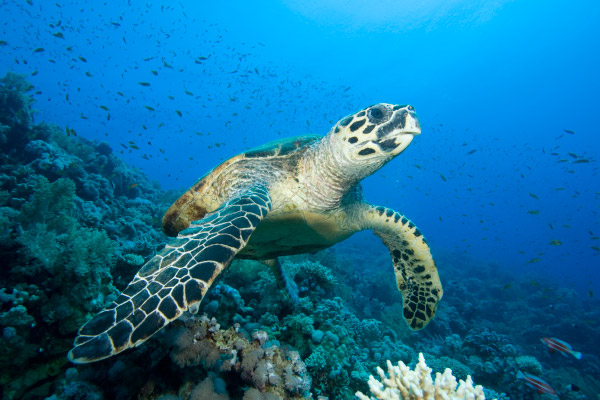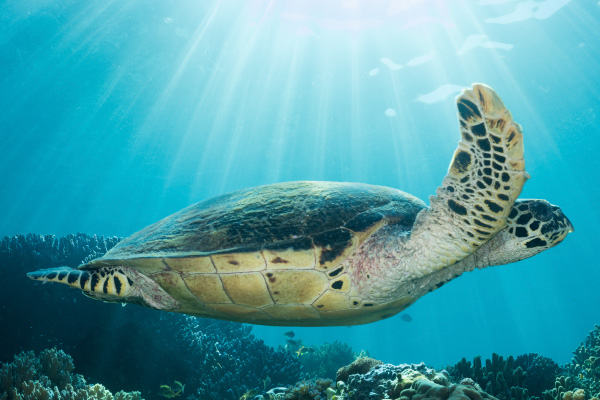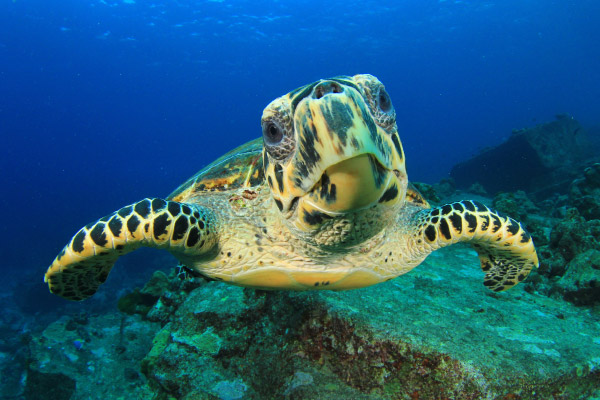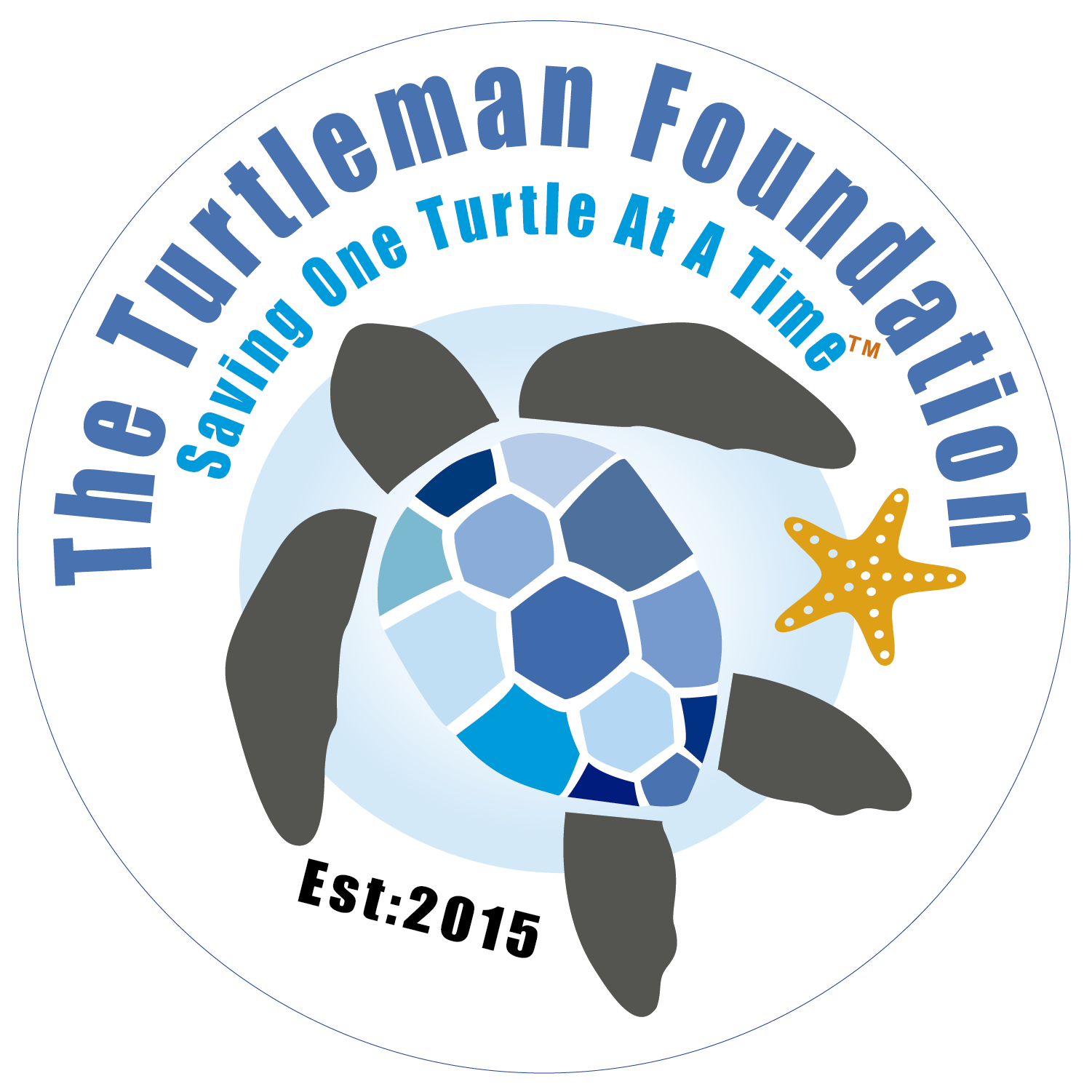HAWKSBILL
Named for its sharp, pointed beak, the hawksbill feeds primarily on reef sponges, invertebrate organisms whose bodies contain tiny indigestible glass needles. The hawksbill has a beautiful, translucent shell, which has long been exploited for use in turtle shell jewelry. Though international trade of turtle shell has been prohibited, illegal trafficking continues.



SCIENTIFIC NAME
Eretmochelys Imbricata
STATUS
Critically Endangered
DISTRIBUTION
- Circumglobal.
- Nesting areas in tropics.
- Non-nesting range is generally restricted to tropical regions, although during immature stages it extends to sub-tropical regions.
SIZE
ADULT
- Length 2.5 – 3Ft
- Weigth 330 Pds
HATCHLING
- Length 1.2 In
- Weigth .15 oz
DIET
Large juveniles and adults predominantly eat sponges and other sessile invertebrates associated with coral reefs and rocky reefs. Add at end of sentence.
REPRODUCTION
- Reproduce every 1-5 years
- Lay 3-5 clutches of eggs per season
- Lay 120-200 eggs per clutch
- Ping-pong ball sized eggs weights approximently 1 oz
- Incubation period is approximately 60 days long
FACTS
- Hawksbills are the only marine consumer whose diet predominantly comprises sponges, and thus play a major role in tropical, coral reef ecosystems
- Hawksbills commonly nest within beach vegetation on secluded, low-energy beaches
- Hawksbills in the Eastern Pacific are probably the most endangered sea turtle population in the world.
HAWKSBILL TURTLE FACTS
- Hawksbill turtles are named after their pointed beaks,
- which resemble those of birds.
- Hawksbill turtles are up to 45 inches (114 cm) long and
- weigh 110 to 150 pounds (50 to 68 kg).
- Female hawksbill turtles return to the same nesting grounds
- where they were born to lay their eggs.
- Hawksbill turtles can be found in the coastal waters of more
- than 108 countries.
- Hawksbill turtles help keep reefs healthy by feeding primarily on sponges that out-compete corals.

